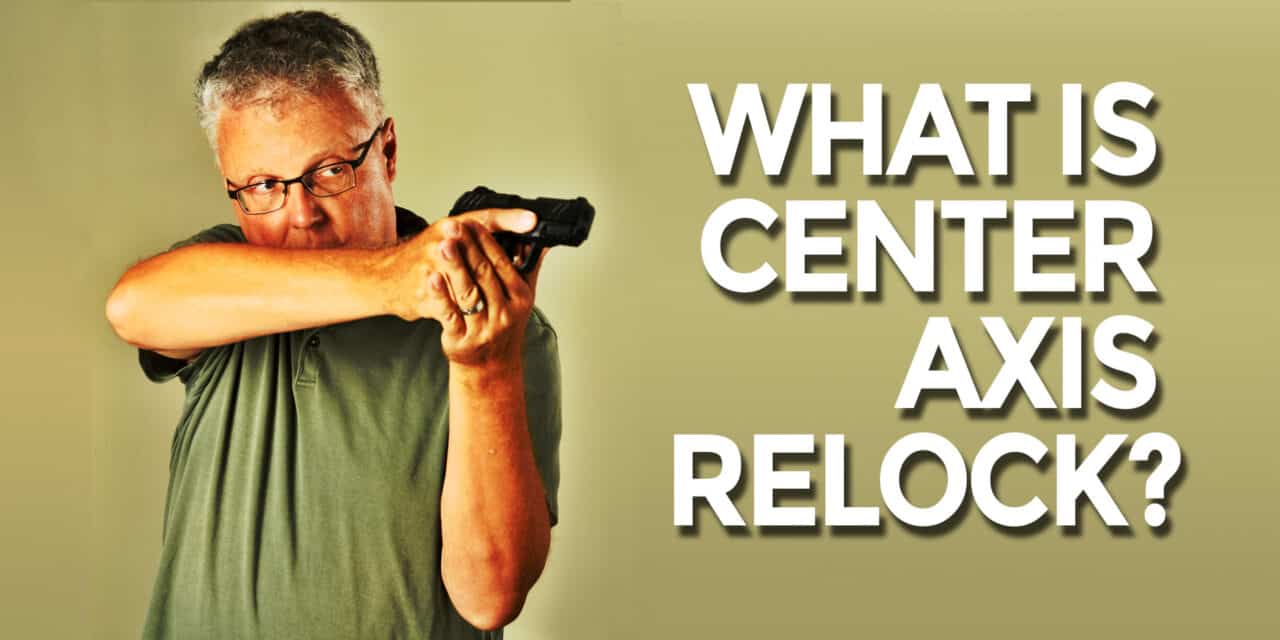Center Axis Relock
The John Wick movies burst onto the screen in 2014. They star Keanu Reeves as an expert assassin who is dragged back into the underworld of crime and violence. Two sequels quickly followed the original, and a fourth movie is in the works. The series is renowned for its crisp, groundbreaking action sequences, created with the assistance of some of today’s highest-level competitive shooters.
A distinctive part of the movies’ action sequences is Keanu’s excellent gun-handling skills. This added a layer of believability not usually seen in today’s action movies. It has also attracted the interest of the firearms community, which has taken the time to dissect the action sequences to figure out how Keanu is making John Wick come to life.
One of the gun handling techniques commonly associated with the John Wick movies is Center Axis Relock (“CAR”). CAR is a unique method of keeping your pistol near you and with you when space is limited. There are dozens of articles out there about how Center Axis Relock is (allegedly) used in the John Wick movies. However, no one has taken the time to talk with the people who actually teach this gun handling technique about how it’s used in the John Wick movies.
Until now, that is. So, let’s talk about Center Axis Relock. More importantly, let’s learn from the people who teach this method about how it’s portrayed on the silver screen.
What is Center Axis Relock?
Center Axis Relock was developed by Paul Castle of Sabre Tactical as a close-distance technique that is useful for firearm retention and shooting from inside a vehicle. Since Paul’s death in 2011, the system has been curated by Jeff Johnsgaard of Natural Tactical. Jeff is a veteran law enforcement officer, accomplished martial artist, and experienced firearms trainer who now teaches Center Axis Relock to armed citizens, law enforcement, and elite military units.
At its heart, the CAR system was developed to get quick hits on targets at close range, from five feet out to a few yards. It’s meant to complement — not replace — existing pistol stances such as the Weaver and Isosceles stances. The CAR system emphasizes natural fighting positions such as a bladed stance and integrates methods for quick acquisition of the sights at short distances.
Elements of Center Axis Relock
 The Center Axis Relock system has three essential elements:
The Center Axis Relock system has three essential elements:
A Bladed Stance
When done properly, Center Axis Relock presents a very thin profile to the target. The gun is held tight and close to the chest. Its close proximity to your body helps with weapon retention in a struggle, as the leverage is working in your favor and against your opponent. This close-in stance also comes in very handy when moving around inside a structure or a vehicle, as your gun isn’t way out in front of you for all to see (or grab).
Use of the Non-Dominant Eye
Learning how to shoot with both eyes open takes some time. Some people (like me) adapt quickly; others learn much slower. You can shoot with only one eye open, but that cuts down on your depth perception and your view. The CAR technique bypasses this problem by moving the pistol in front of your eye on your non-dominant (i.e. support hand) side. This places the pistol close to your body and places the pistol’s sights at the natural close-distance focus point of your eyes.
Adjusting Your Grip
CAR requires a bladed shooting stance. This means moving your hands on your gun. If you use a thumbs-forward grip, you’ll need to move your support hand into more of a Weaver push-pull grip, where the fingers on the support hand rotate slightly forward. This also drops the support side elbow down slightly. The idea behind this grip is that it makes it easier to control recoil in close quarters and vehicles, and it gives you better leverage if you’re faced with a tug of war for your gun.
Does John Wick Use Center Axis Relock?
I got in touch with Jeff Johnsgaard. He’s the leading expert on the Center Axis Relock system. I asked him about how the John Wick films portray CAR.
“That’s not really Center Axis Relock in those movies,” he said. “I don’t know who trained Keanu on the system, but it wasn’t us.”
He’s right. Take a look at this publicity still from the first movie. This is the image many shooters and journalists offer as proof that John Wick is using Center Axis Relock.
Keanu clearly is not bladed all that much in this photo. He’s also using a standard thumbs-forward grip, his pistol is out of his line of sight, and it’s right in front of his dominant eye. All of this diverges from the Center Axis Relock method. Instead, Keanu appears to be using a modified High Ready Position.
(High) Ready. Set. Go.
The High Ready position is a stopping point on the way between a draw from the holster and a fully extended pistol that’s out in front of your body, ready for use. You hold the pistol in both hands, close against the chest, using a thumbs-forward grip. From this position, it’s easy to press your gun out towards targets at all manner of distances.
High Ready also makes it easy to retain control of your firearm if someone tries to grab it. Your pistol is up close to your chest in this position, just like it is in Central Axis Relock. This gives you leverage over anyone who is pawing at your pistol. In the photo above, Keanu Reeves is using a slightly different version of High Ready to keep his 1911 close to his body and ready for action. His gun is closer to his face, and it’s canted slightly. This is an effective, natural technique for moving with a gun, but it’s clearly not Center Axis Relock.
Why High Ready?
 CAR is a specific technique for specific situations. Castle designed it for work in very tight spaces, like inside a car. It works alongside your existing shooting stance when the need arises. High Ready, on the other hand, is an extension of your existing draw technique. A good draw stroke consists of six parts. First, you get a firm, firing grip on your gun. Next, you draw your gun from your holster and rotate your gun towards the target. Then, you bring your pistol up and forward, where your support hand can grab onto it, and you continue on to get your pistol on-target in your field of view.
CAR is a specific technique for specific situations. Castle designed it for work in very tight spaces, like inside a car. It works alongside your existing shooting stance when the need arises. High Ready, on the other hand, is an extension of your existing draw technique. A good draw stroke consists of six parts. First, you get a firm, firing grip on your gun. Next, you draw your gun from your holster and rotate your gun towards the target. Then, you bring your pistol up and forward, where your support hand can grab onto it, and you continue on to get your pistol on-target in your field of view.
High Ready is that moment when your gun is up and in front of you, both hands are on the gun and it is right out in front of you, but you don’t have anything close to a sight picture.
High Ready is easy to integrate into your tactical toolbox because it’s already a part of a smooth, safe draw stroke. It’s also easy to learn safely at home. I recommend you include it as part of your dry fire practice regimen.
Hollywood Likes Rocking The Relock
The John Wick movies have sparked a renewed interest in high-level firearms training. That’s a good thing for both gun owners and firearms trainers. There are many different techniques Hollywood uses in those movies. Some techniques are from the world of practical shooting competitions and others are from more tactical disciplines. The John Wick films helped spur a ton of interest in Center Axis Relock, even though the films don’t actually portray it. CAR is a technique created to help you put rounds on target in tight, enclosed spaces, no matter if you’re a trained professional assassin straight out of Hollywood or a normal citizen straight off of Main Street.



